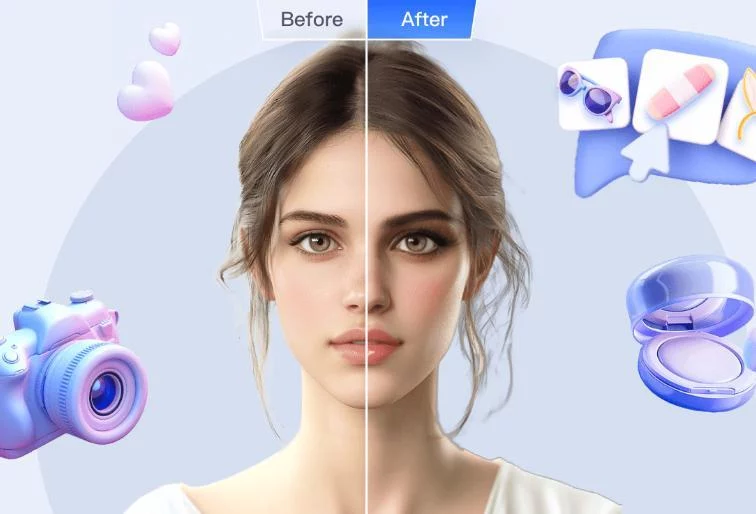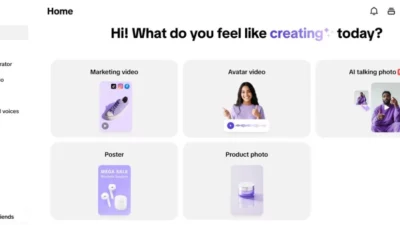Our brains are wired to respond positively to symmetrical, glowing faces – it’s an evolutionary trait that associates these features with health and vitality. Modern face filters tap into this instinct, offering digital tools to highlight our best features while softening perceived imperfections. But there’s an art to using filters effectively. When a coworker comments “You look rested!” during a video call, not realizing you’re using a softening filter, that’s the sweet spot. The magic happens when filters accentuate rather than replace your natural appearance. In this article, we’ll explore professional techniques for using face filters to create authentic yet polished looks for video chats, social media, and professional networking.
Choosing the Right Filter for Your Goals
Natural Enhancement Filters vs. Creative Effects
Natural enhancement filters work like digital makeup – they subtly even out skin tone, brighten under-eye areas, and add a healthy glow without obvious distortion. These are ideal for professional Zoom meetings or dating profile pictures where authenticity matters. Look for filters labeled “subtle glow” or “natural enhancement” that make small adjustments to lighting rather than reshaping facial features. Creative effects like animal ears or dramatic makeup transformations serve different purposes. They’re perfect for casual social media posts where you want to show personality or celebrate holidays. The key is matching the filter to your context – whimsical flower crown filters might charm friends but confuse potential employers during a job interview video call.
Matching Filters to Your Facial Features
The most flattering filters complement your unique face shape and features. Round faces benefit from filters that add subtle contouring along the jawline, while square faces might prefer softening filters that gently round the angles. If you wear glasses, test filters to ensure they don’t distort the frames or create strange reflections. Pay attention to how filters handle your most distinctive features. Someone with striking eyebrows might choose filters that maintain their natural shape rather than overlaying standard “perfect” brows. Darker skin tones should seek out filters specifically designed for diverse pigmentation – some generic filters unfortunately still wash out deeper complexions.
Lighting & Angle Techniques for Best Results
Positioning Your Face for Optimal Filter Effects
Filters work best when your face is well-lit and properly framed. Position yourself so light hits your face evenly – sitting facing a window works better than having light only from above (which creates shadows) or behind (which silhouettes your face). The ideal distance is about arm’s length from your camera, with your eyes at roughly two-thirds of the screen height. Slight angles often work better than straight-on shots. Turning your face about 30 degrees to one side creates natural dimension that filters enhance beautifully. When testing a new filter, slowly move your head through different positions to find your most flattering angle – you might discover that a particular tilt makes the filter’s contouring effects look especially natural.
Avoiding the “Overfiltered” Look
The dreaded “plastic face” effect happens when filters smooth out every natural texture. To avoid this, look for filters that preserve some skin texture – tiny pores and faint laugh lines actually make digital enhancements more believable. Many apps let you adjust filter intensity; start at 50% strength and increase gradually until you see improvement but still recognize yourself. Watch for telltale signs of overfiltering: blurred hairline edges, disappearing earlobes, or a floating-head effect where your face doesn’t quite connect to your neck naturally. If friends start asking if you’ve had cosmetic procedures when you haven’t, it’s probably time to dial back the filter strength. Remember, the best filters make people compliment you, not the filter itself.
Creating Your Signature Filter Style
Customizing Filter Intensity Levels
Most quality filter apps allow customization beyond simple on/off toggles. You might love a particular filter’s skin-smoothing effect but want to reduce its eye-enlarging feature. Advanced settings often let you adjust specific elements like blush intensity, teeth whitening strength, or facial symmetry correction independently. Create presets for different situations – perhaps a “professional” preset with very subtle enhancements for work calls, and a “social media” preset with slightly more dramatic effects for Instagram stories. The most convincing filtered looks are consistent over time, helping create your recognizable personal brand rather than looking like a different person in every post.
Building a Personal Filter Collection
Rather than chasing every trendy new filter, curate a small collection that works reliably for you. Save 3-5 go-to filters that flatter you in different contexts – maybe one for morning video calls when you’re tired, another for evening social posts, and a fun option for special occasions. Organize them by purpose: “Work Appropriate,” “Creative Play,” “Natural Enhancement.” Pay attention to how filters perform in different lighting conditions. Your perfect golden-hour filter might look strange under fluorescent office lights. Test your favorites in various environments to understand their limitations. Over time, you’ll develop filter intuition – knowing instantly which one will give you the right look for any situation.
When to Go Filter-Free
Strategic filter-free moments build authenticity. Consider showing your real face in vulnerable, heartfelt posts or when discussing serious topics. Many influencers alternate filtered and unfiltered content to maintain relatability. Your followers will appreciate seeing the real you sometimes – it makes the enhanced versions feel more like playful creativity than deception. Pay attention to how filter use affects your self-image. If you start feeling disappointed with your unfiltered reflection, it might be time for a filter break. Healthy filter use should make you feel empowered, not dependent on digital alterations to feel presentable.
Conclusion
Face filters work best when treated like digital accessories rather than masks to hide behind. The most sophisticated users approach filters the way they would makeup – as tools to highlight their natural beauty while expressing creativity. Think of filters as mood-setters rather than truth-alterers; they’re wonderful for creating a vibe or aesthetic but shouldn’t become a requirement for feeling presentable. As technology advances, the line between real and enhanced will continue blurring. What won’t change is the human appreciation for authenticity. Use filters to amplify your best self, not create a fictional version. The most charming filtered images always leave people wondering: “Do they really look that good, or is it magic?” – and that’s exactly the intriguing sweet spot to aim for.

Lexy Summer is a talented writer with a deep passion for the art of language and storytelling. With a background in editing and content creation, Lexy has honed her skills in crafting clear, engaging, and grammatically flawless writing.



